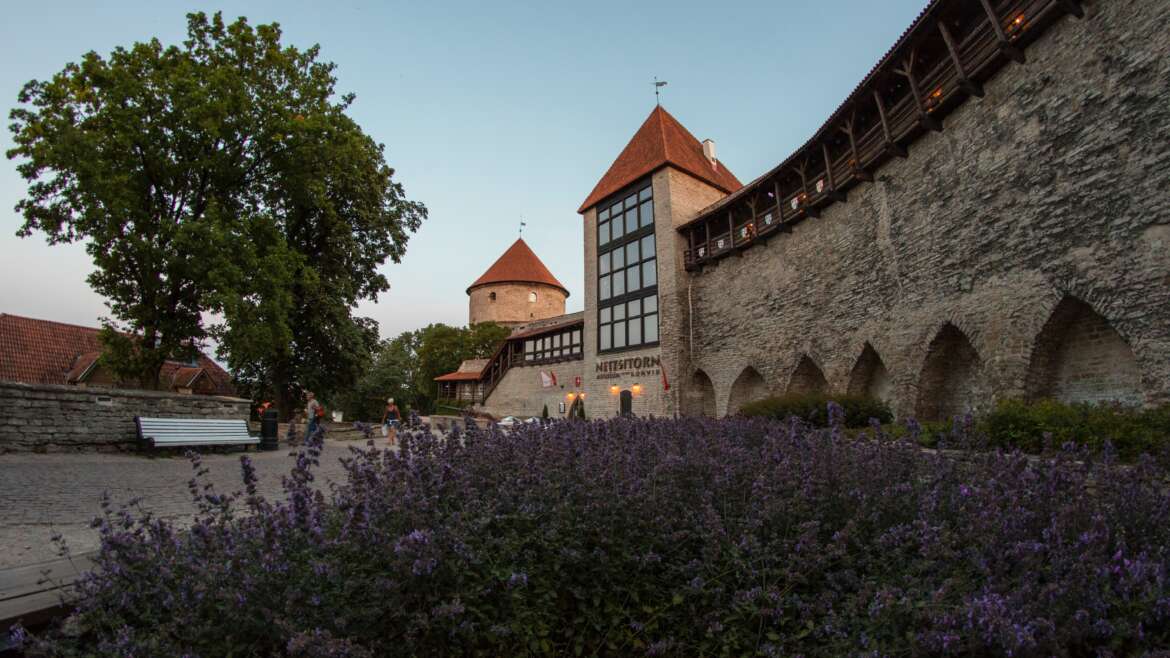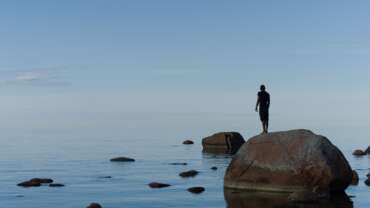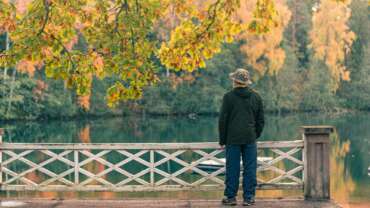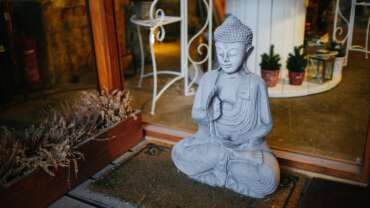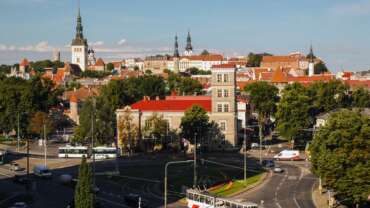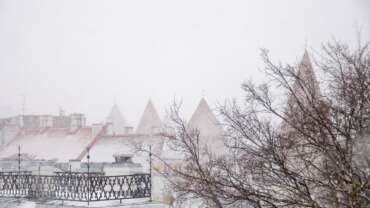Destinations & Places in Estonia
Tallinn – The Capital
Tallinn is the capital city of Estonia and a perfect holiday destination if you want to combine the comforts of modern world, versatile nightlife and luxurious adventures with rich cultural scene in the local historical setting.
First established in the early medieval era, today’s Tallinn is an exciting mix of old and new. Here’s the good news: with Tallinn being such a compact, green capital, you can cover a lot in just a weekend and enjoy short scenic strolls while at it.
Tallinn Old Town is one of the best preserved Hanseatic town centres in the world. A stone’s throw away you’ll find the city’s business centre with modern towers and luxurious hotels, trendy neighbourhoods and large shopping centres.
The coastal vibe
Tallinn’s luring coastline dotted with promenades and sandy beaches is especially rewarding during the summer but offers scenic views of the iconic cityscape throughout the year.
Easy to access
Tallinn is the first point of entry to Estonia for most visitors, and if you’re the kind of person who likes to jump right in, then you’re in luck, as Tallinn city centre is never more than 15-minutes drive away regardless of if you happen to arrive by plane, train, coach or ferry.
Tallinn Old Town
Visitors from all over the world drop around to admire the beauty of Tallinn, the best preserved medieval city in Northern Europe boasting Gothic spires, winding cobblestone streets and enchanting architecture.
Once a home to wealthy merchants settling from Germany, Denmark and beyond, Tallinn Old Town today is enjoyed by locals and visitors alike, with restaurants, bars, museums and galleries bringing much life to this historical city centre.
Unlike many other capital cities in Europe, Tallinn has managed to wholly preserve its structure of medieval and Hanseatic origin. Due to its exceptionally intact 13th century city plan, the Old Town was inscribed as a UNESCO World Heritage Site in 1997, joining the ranks of the world’s most recognised landmarks. Here you’ll find original cobblestone streets dotted with medieval churches and grandiose merchant houses, barns and warehouses many of which date back to the Middle Ages.
Spend a day in an authentic medieval milieu and you will soon realise why so many visitors have described Tallinn Old Town as mystical, mesmerising and addictive.
Kadriorg
Presidential yet cosy, this romantic inner-city area nearby the coast can very well be the place where you’ll find the heart of Tallinn.
Kadriorg palace and art museum surrounded by manicured Kadriorg Park was once established by Tsar Peter the Great as a manifestation of love. The 18th-century park featuring fountains and streams, is surrounded by equally historical wooden houses, with tree branches in bloom leaning over detailed door frames of these stunning masterpieces.
Here you’ll find elegant restaurants, cute cafes with a local charm and a sophisticated art scene.
Kadriorg is a home to Estonia’s largest art collection exhibited in KUMU art museum of Estonia, Kadriorg Art Museum and Adamson-Eric museum, all nestled together along the edge of the park.
Telliskivi
Telliskivi is the commercial and cultural hub of Kalamaja, with its restaurants, performance venues and indoor shopping streets selling everything from organic cosmetics to Estonian design.
A good opportunity to experience the repurposed industrial buildings that Northern Tallinn is famous for is in Telliskivi Creative City. The factory buildings have become a popular meeting place for those who enjoy unique restaurants, art exhibitions, draft beers, design and vintage shops, alternative theatre and club events.
It is a well-known leisure place for city dwellers and visitors to the city, where design, music, art and open-mindedness meet; an independent business centre located on the territory of the former industrial complex belonging to the Baltic Railways. During the Soviet period, locomotives, wagons and transformers were repaired here.
Telliskivi Creative City offers a cosy and bohemian atmosphere where you can find indoor shopping ‘streets’ lined with local retailers, small studios, a flea market open on Saturdays, and a variety of cultural events. The area comes alive at night with popular bars and dance joints buzzing. By day, Telliskivi is family-friendly and even has a playground in its inner courtyard.
It’s also a gold mine of great restaurants loved by locals and praised by visitors. Cuisines range from vegetarian and vegan to barbeque, French, Indian, gluten-free, contemporary Estonian and more. The year-round Balti Jaama Market is a foodie heaven packed with stalls and restaurants that are worth a visit, not to mention its upstairs antique and design shops.
The international photographic art centre Fotografiska is located in the heart of Telliskivi, and the area is also home to the Vaba Lava theatre, the Sõltumatu Tantsu Lava (Independent Dance Stage) and the Club of Different Rooms, which host interesting cultural events, performances and exhibitions.
To visit Telliskivi, take trams number 1 or 2 to the stop of the same name, or walk about 5 minutes from the Old Town.
Noblessner
This former submarine factory is now a vibrant community of apartments, high-level restaurants, shops and cultural venues. The presence of the sea is always felt in Noblessner as it’s situated on a beautiful, cosy harbour.
The history of the Noblessner seafront quarter dates back to 1912, when two St. Petersburg businessmen built the most important submarine factory in then Tsarist Russia. These were Arthur Lessner, a machine manufacturer, and Emanuel Nobel, Europe’s largest fuel tycoon. The name of the factory – Noblessner – was created by combining their two surnames.
A total of 12 modern submarines were built in the factory between 1913 and 1917 to supply the Russian Tsar’s navy. Although the construction of submarines ceased after Estonia’s independence in 1918, shipbuilding and repair took place here until 2018. As a result, the area was closed to the public for a century.
Nowadays, Noblessner has undergone rapid development: it is home to a yacht harbour, offices, restaurants and even the factory and taproom of Estonia’s most popular brewery – Põhjala. The Noblessner development project won the Best Urban Regeneration category at the Baltic Real Estate Awards 2020 for its mix of historical buildings and fresh, modern architecture.
Here you will also find Kai Art Center, PROTO Invention Factory VR centre, and techno nightclub HALL. Culinary highlights include restaurant 180°, founded by Michelin starred chef Matthias Diether, and Lore Bistroo, a local favourite, but there are also plenty more sweet spots to explore.
Kalamaja
New cafes, bars and galleries have transformed the former industrial complexes of this historical wooden house district. It is now a fast-developing area of Tallinn, attracting creatives and those young at heart.
Often considered a hipster area of Tallinn, this once closed off Soviet border zone is conveniently located between the scenic Tallinn coast and Old Town and features some real architectural gems. The area is best known for its colourful wooden houses, bohemian charm and industrial heritage.
Kalamaja has served as the city’s main fishing port from the middle ages onward. Its name even means ‘fish house’ in Estonian. Fishermen, fishmongers and boatmen have lived here since the 14th century.
Everything changed in 1870, however, when the Tallinn-St. Petersburg railway was completed. Large factories sprang up in the district, bringing with them an influx of thousands of workers. This industrial heritage, exemplified by the internationally renowned Seaplane Harbour Museum and Patarei sea fortress, has only added to Kalamaja’s intrigue.
Part of Kalamaja’s old industrial infrastructure has been preserved and is still operating today. For example, world-famous pianos are still manufactured on Kungla Street at the Estonia piano factory. Many factory buildings are now also being used for new purposes, as homes to restaurants, cafes, bars and even galleries and offices. Telliskivi Creative City is an excellent place to see this phenomenon.
Those interested in architecture and history should take a guided tour of Kalamaja. The wooden houses, which give the neighbourhood a uniform appearance and reputation as a prized real estate area, have their own story to tell. You can learn the difference between ‘Lender’ and ‘Tallinn’ houses, why old-fashioned linseed oil paint protects buildings better than modern paints, and how to distinguish it on buildings.
There are activities awaiting curious minds and families with children year-round in Kalamaja, regardless of the weather: the Seaplane Harbour Museum, Energy Discovery Center, and PROTO Invention Factory are great choices.
Pirita and Viimsi
With a popular beach, adventure park and marina, Pirita is a place in Tallinn where to enjoy pleasant summer moments.
Its refreshing pine scent is only a couple of kilometres away from the city centre. And 15–20 minutes away, in Viimsi, you’ll come to find romantic islets and old fishing villages next to modern homes.
Pirita’s seaside area became the destination for Sunday trips and sunbathing already in the beginning of 20th century. In order to enjoy the charm of Pirita in peace and quiet, you’d have to go across the road from the beach to the mouth of Pirita river where row boats, canoes and paddle boats can be rented. Or marvel at the ruins of the Pirita Convent from the 15th century, the place for the grandiose Birgitta festival in August. You can also stay over at the convent still active in the stylish building next to the ruins.
Dishes and a view to the sea can be enjoyed in pubs and restaurants next to the beach. The TV tower with the highest observation platform in Estonia can be located if you head a bit more inland. If the weather is warmer, it’s nice to combine a visit to the tower with touring around the botanical garden right next to the tower.
The whole Pirita area is a nice area to walk and do sports in: the beach, promenade, adventure park, official fitness trail as well as the paths under the forest are a good for this.
West Estonia
Western part of Estonia are surrounded by the Baltic Sea. Here the coastline is peppered with beaches, small seaside villages and holiday resorts with numerous spas. From unspoilt beaches, yacht marinas and larger ports, there are many ways to arrive here and heaps of things to do.
The two main draws for western Estonia are the resort towns of Haapsalu and Pärnu boasting cute wooden architecture and oodles of summer concerts and outdoor terraces. Visitors from Scandinavia and other neighbouring countries know to book early and head to the western coast of Estonia for the sandy beaches and long summer nights.
Western Estonia is also one of the best places for bird watching and animal tracking in the country. Here lies the large Soomaa national park, a temporary home to millions of migratory birds each year. If you howl loudly and listen quietly enough you might even get a response from a local pack of wolves roaming the local forests.
Haapsalu
This calm and friendly small town located less than 2-hour’s drive from the capital enjoys a long standing history as a spa resort. Once a popular summer holiday destination for the Russian aristocracy, modern Haapsalu hosts a number of international festivals and is home to charming restaurants.
Haapsalu is a wonderful little town with narrow streets, a miniature town hall and romantic wooden dwelling houses. On the romantic seaside promenade stands Kuursaal, one of the finest wooden buildings in Estonia. Here you will also find a deep rooted spa culture.
The first Haapsalu mud spa opened its doors in 1825 and since then Haapsalu has attracted spa lovers from all over the world including the Old Russian czars. Haapsalu’s serene vibe is loved by families and romantic couples who enjoy having picnics, walking, visiting spas and sailing. Once in Haapsalu, don’t forget to browse for a traditional hand-woven woollen Haapsalu shawl with fine and elegant patterns.
Pärnu
The ultimate summer holiday destination in Estonia, Pärnu attracts holiday makers with its large sandy beach, numerous restaurants, cocktail bars, spas and a relaxed, laid back vibe.
With an area of 858,07 km², Pärnu is the biggest municipality in Estonia, almost as big as Berlin (892 km²). Pärnu’s area places it in the top 100 of the world, ahead of such giants as Milan, Athens, Vienna, Buenos Aires, Barcelona, Toronto and Hamburg as well as Copenhagen, Stockholm and Amsterdam. Regardless of the large area, however, the density of population of Pärnu is only 60 people per square kilometre.
This medieval city has an easygoing and romantic flair to it. Being largest resort in Estonia, Pärnu is also a home to a variety of spas from large water parks to more intimate and historical bath houses.
Long, white sandy beaches, shallow waters and “the best Sun in Estonia” attract Estonians and visiting guests alike. Beautiful beach promenade is ideal for walking, cycling and roller skating with playgrounds, water fountains and play areas offering days full of fun and joy for children.
If you are feeling adventurous, try water skiing, yachting or paddle a canoe or a kayak down the Pärnu river to the open sea and nearby islets.
In 2020, Pärnu was voted the most sustainable destination of the Baltic Sea countries. The city is special because of its sea, rivers, beaches and promenades and its many parks, avenues and forest groves. Pärnu’s diversity and amenities have made it a resort with a 180 year history, which is why protecting and valuing its nature is a priority when it comes to the development of the city. The strengths of the unique city of Pärnu include a friendly, functional and attractive environment with a lively and compact historical city centre.
Pärnu is also one of the 2020 Sustainable Top 100 destinations. The competition for international sustainable travel destination success stories is organised by Green Destinations to recognise places that put effort into making the experience of visitors more sustainable and value-based. Pärnu’s success story is about a protected coastal meadow being opened to the public and maintained by cows. The coastal meadows under Natura2000 protection are located next to Pärnu beach, which is the city’s main attraction. Many were initially unhappy as the protected area restricts the expansion of the beach. However, the city managed to figure out how to introduce people to the protected area, make them appreciate the natural value of it and offer them an alternative to sunbathing on the beach. The protected beach now includes an educational nature trail as well as observation towers and is maintained by the city cows.
Soomaa national park
The Soomaa National Park is a wetland area in the Pärnu and Viljandi County. Visitors might know Soomaa best for its great flood or the so-called fifth season, when the water from melted snow or heavy rains floods all the lower forests, roads and even yards.
If you are approaching Soomaa from Pärnu, be sure to stop at the mysterious Tori Hell. When headed to the Visitor Centre of the Soomaa National Park, stop by the historical Riisa Study Trail, which is accessible for both explorers in wheelchairs and hikers with baby prams.
Soomaa visitors can take part in regular, canoe and snowshoe hikes; beavers are the popular focus for animal viewing tours. The Beaver Trail, which starts at the Visitor Centre of the Soomaa National Park, is accessible both by wheelchairs and baby prams.
There are five large swamps in Soomaa, also known as the capital of Estonian primeval nature. Traditional cultivation of land has turned the banks of the meandering river into diverse river flood-meadows and wooded meadows. It is due to these untouched areas that Soomaa is part of the network of European wilderness.
Soomaa is a shelter for smaller and larger birds and animals. These forests are home to elk, deer, wild boar, lynx, wolf and bear; watery landscapes are designed by beavers.
Birds living in Soomaa include grouse and golden eagle; mash edges are the playgrounds of the capercaillies, while open mash fields are filled with the cooing of black grouses. Woodpeckers and many owls can be found in more humid forests. Flood-meadows are home to Charadriiformes, great snipe and corncrake.
The history of human population in Soomaa dates back to the Stone Age. The ancient and charming nature of this place is reflected in the traditional aspen logboat, the making of which can be learned in Soomaa.
The Soomaa National Park belongs to the PAN Parks network of protected areas, which focuses on the protection of wilderness.
Matsalu national park
The park includes the Matsalu Bay and its coastline, the Kasari River delta, and nearly 50 islands and islets, along with the surrounding Väinameri Sea. One of Europe’s most important waterfowl resting areas between the Arctic and Western Europe, it is a true paradise for bird lovers.
In addition to birds, the Matsalu National Park also protects the semi-natural habitats (coastal and flood meadows, alvars and wooded meadows, reed beds, small islands) characteristic of West Estonia and the cultural heritage of Väinameri Sea.
Matsalu is home to 4,000 hectares of Kasari meadow, Europe’s largest preserved flat meadow, which is an important nesting site for corn crake, spotted crake and great snipe. More than 2 million waterfowl fly through the national park each year, of which more than 230,000 remain for shorter or longer stays.
The largest of its kind near the Baltic Sea is the reed bed of Kasari delta, covering nearly 3,000 hectares, where you can hear warblers, the best known of which is the Eurasian bittern. Matsalu coastal meadows are some of the largest in Europe and important for nesting waders (for example, shanks and tattlers, Northern lapwing, whimblers and the Eurasian curlew) because of their low vegetation and reed-free waterline. Beef cattle help maintain the meadows. The white-tailed eagle and the Southern dunlin can also be encountered. Of the animals, it is the elk that is most likely to be seen from the Kloostri observation tower.
Plant enthusiasts can find numerous Orchidaceae growing among the oak and hazel trees in the species-rich wooded meadows. The diversity of the West Coast’s flat landscapes is enhanced by the coastal scarps consisting of carbonate rock, formed from the coral reefs during the Silurian period. Some of the old thatched-roofed hay barns and fishing huts have been restored to preserve the cultural heritage.
The Visitor Centre of Matsalu National Park is housed in the Penijõe Manor; its permanent exhibition gives an overview of the nature, history and cultural heritage of the protected area,with a 20-minute slide programme “Matsalu aasta. Elu Matsalus jääst jääni“ (Year in Matsalu. Life in Matsalu from winter to winter) available. Explore exciting nature vacation packages for the best experience! Nature experience is also provided by several observation towers and hiking trails.
Nõva & Noarootsi peninsula
Nõva and Noarootsi appeal to travellers with their untouched nature and Scandinavian feel. Coastal Swedes inhabited these western Estonian areas for hundreds of years, leaving behind a wealth of history and traditions.
Home to Estonia’s oldest and smallest wooden church, Nõva borders three nature reserve areas, a safe haven for local flora and fauna. The nearby Noarootsi peninsula draws in visitors for its beautiful sandy beach, pine tree forest and is considered one of the best places for birdwatching in Estonia.
Located north of the coastal town of Haapsalu, Nõva and Noarootsi are equally great places for sailing, kayaking, wind surfing and touring on the ice roads during the winter. In addition to the centuries-old Swedish heritage, you’ll also find traces of more recent Soviet military history in Noarootsi.
South Estonia
Deep blue lakes hidden between rolling hills and valleys is what makes South Estonia a popular nature getaway destination.
Deep forests, a large national park, sleepy villages and adorable towns with historical churches and manors is what best characterises the southern Estonian vibe. Southern parts of Estonia are also a home to many traditional communities, such as Setos and Old Believers.
Here you will find Tartu, the oldest town in the Baltics, which also happens to be a home to northern Europe’s oldest university boasting groundbreaking discoveries since the 17th century. Moreover, the nearby town Otepää has been the training ground for several Olympic medalists. If your holiday goals are bit more modest then South Estonia is also great for science exhibitions, winter sports and spa trips into the wild.
Viljandi
This adorable little town hidden deep within southern Estonian forests boasts impressive castle ruins, a former home of the ruling Livonian Order. The scenic views of the nearby lake and wooden architecture makes Viljandi a place of interest to both nature and culture lovers.
Popular among the locals as one of the most visited summer festival destinations in Estonia, Viljandi hosts a number of themed festivals from world-renowned folk music to medieval fairs. The cherry on top of the cake has to be the large nearby lake beach, offering boat rentals and regular trips.
The heart of Estonian folk music and vocal heritage is kept alive and well in Viljandi by the large student population from Viljandi Culture Academy and the many musicians who stroll the local streets year round. Reaching its melodic peak every July at Viljandi Folk music festival, here you can enjoy a warm summer weekend packed with contemporary renditions of traditional music.
Once you’ve discovered Viljandi in its full charm and beauty, head out of town and soon you will come across even more natural beauty in Soomaa national park and at the 16th century Olustvere manor.
Setomaa
This ethnic and linguistic minority living in an area covering South East Estonia and North West Russia are renowned, admired and loved for their impressive vocal heritage, traditional villages and food.
For their geographical location, religion and roots, seto culture is often viewed as existing on the border of two worlds. So, if you’re looking to explore some European indigenous culture, then head to the southeastern border of Estonia to Seto traditional villages.
Setos have kept close ties to their traditional roots throughout the history and boast their own unique lifestyle including their own language and clothing customs. Setos are also well known for their ancient polyphonic singing tradition that is kept alive and well by older and younger generations alike. While in Setomaa, make sure to sample some of their home cooked pies, lake fish and dairy.
In 2007, the European Commission launched the European Destinations of Excellence (EDEN) competition. Setomaa – nominee in 2015 in category “EDEN. Estonia’s hidden treasures. Food tourism destination”.
Tartu
This leafy town of students, intellectuals and creatives brings back sweet, youthful memories to many who have once toured the city on a bicycle during their student days.
A home to one of Northern Europe’s oldest universities, Tartu has a wealth of museums (such as Estonian National Museum) and an upbeat nightlife. Upon your arrival in Tartu, you are soon welcomed by a statue of kissing students standing in a large Classicist town square nearby museums, cafes and a large park formed around a hill.
Tartu is very compact, with most sights, restaurants and nightlife nestled across a couple of parallel streets. Being the second largest town in Estonia and a hot bed for creative and scientific culture, there is always something on from theatre performances to concerts and festivals.
Tartu is also on the 2020 Sustainable Top 100 destinations list. The competition for international sustainable travel destination success stories is organised by Green Destinations to recognise places that put effort into making the experience of visitors more sustainable and value-based. The success stories of Tartu are its bicycle-sharing service and CNG-powered buses. As a result, there is less car traffic and traffic noise in the city, which also leads to better air quality.
Otepää
A small town nestled in southern Estonian hills and valleys, Otepää is a well-known winter holiday destination for all those who love the snow. Skiing, skating, snowboarding in all its forms can be enjoyed at this relaxed winter resort boasting luxurious spa hotels and restaurants.
During the summer you can hike along the paths of Otepää nature park, admire rolling hills and lakes, winding village roads and small rivers. The nearby Pühajärve is one of the largest lakes in Estonia and is perfectly suited for a quiet weekend camping trip in the wild.
Otepää is first and foremost known as a ski resort and here you can enjoy cross country and downhill skiing, as well as snowboarding and snowtubing.
While holidaying in Otepää, you might just come across Olympic medalists sliding by during a daily training session. From sportsmen to romantic souls and photographers, this quiet little town is loved by many.
Peipsi area
The western coast of Europe’s 4th largest lake is dotted with traditional culture, scenic country roads and is an especially rewarding destination for those who enjoy fishing on ice and water.
Natural and ethnic landscape of Peipsimaa area is as diverse and nuanced as Estonian history. Here you’ll find aristocratic mansions, lighthouses, traditional market culture and colourful cottages marking the onion route.
Peipsi area is home to Old Believers, a traditional religious minority recognised as hard-working and skillful fishermen, builders and keen onion cultivators. So if you’re looking for that hearty, home-cooked dinner experience, make sure to have a taste of the many pastries and onion dishes available.
In 2007, the European Commission launched the European Destinations of Excellence (EDEN) competition. Peipsiveere onion route was the nominee in 2010 in category “EDEN. Estonia’s hidden treasures. Water tourism”.
North Estonia
Forests, wildlife, historical towns and fishermen villages surrounding the compact capital city Tallinn is what North Estonia is most appreciated for.
North Estonia has something for everyone, from 20th century military history, to medieval forts, to romantic manors. Pine tree groves surrounding long sandy beaches nearby parks and wilderness provide a quick nature getaway from Tallinn all year round.
Here you can enjoy long scenic coastal walks admiring northern Estonia’s limestone cliff lining that hides sediments and fossils dating back millions of years. Moreover, a short hop on a boat during the summer season will open a door to the tiny rural islands hiding off the northern coast.
Lahemaa national park
Perfect for a day trip out of Tallinn, Lahemaa national park serves as an authentic taster of natural and cultural landscapes in Estonia.
Located on the northern coast of Estonia, Lahemaa is perfect for a hiking trip and nature watching. Here you will find stony and sandy seashores, picturesque bogs, pine and cliff forests, rivers that cut into the limestone cliff as well as erratic rocks left over from the last Ice Age.
Lahemaa is one of Europe’s most important forest conservation areas, where many large mammals live. Located south of the national park, the large forested Kõrvemaa area is a home to moose, wild boars, brown bears, lynxes, foxes an other wild animals.
Lahemaa is one of the 2020 Sustainable Top 100 destinations. The competition for international sustainable travel destination success stories is organised by Green Destinations to recognise places that put effort into making the experience of visitors more sustainable and value-based. To the competition, Lahemaa submitted the events they organised to celebrate the European Day of Parks in Estonia. Their story showcased how it is possible to organise a nationwide event with a small budget and little preparation time by working together. Uniting 60 service providers, the organisers gave people the opportunity to enjoy the outdoors and visit local small enterprises as the situation in terms of the pandemic eased.
Alutaguse National Park
The newest member of Estonian National Park family, Alutaguse National park expands across 43,000 hectares in Northeastern Estonia.
Alutaguse is Estonia’s sixth national park, protecting the swamps, forest and coastal landscapes as well as the traditional culture of Northeastern Estonia. The Alutaguse region expands across the biggest coniferous forests and swamps in Estonia and Estonia’s longest sandy beach.
Some of the landmarks of Alutaguse also include Smolnitsa sand dune area on the north shore of Lake Peipus, the Narva River and one of Northern Europe’s biggest wetlands in Puhatu. Here you can spot a nesting ground of the Golden Eagle and watch the Siberian Flying Squirrel and Brown Bear roam.
Northern Kõrvemaa nature reserve
Unique landscape, beautiful nature, versatile selection of plants and wild animals make Kõrvemaa a popular nature getaway destination in northern Estonia.
Most people come to Northern Kõrvemaa for its forests, lakes and marshes. Here you can wander across the wooden trails in local bogs, climb the hills and go hiking on sandy roads in the wilderness. Kõrvemaa is also a popular ski holiday destination, with well maintained cross country ski tracks of various lengths.
Northern Kõrvemaa is a natural habitat for many rare and protected species of birds and wild animals attracting photographers and nature enthusiasts during the autumn season. Even if you don’t capture wild lynxes, bears or wolves, colourful nature is sure to result in some amazing nature photography.
Rakvere
Rakvere draws in visitors with its impressive 13th century castle ruins, contemporary town square and spa culture.
Located close to the scenic coast and picturesque Lahemaa national park, Rakvere is the perfect holiday destination if you’re looking for urban comforts in a rural setting. Rakvere is also an attractive and rapidly developing town with an alternative edge, being the host of a range of quirky punk music events and festivals.
Rakvere is on the 2020 Sustainable Top 100 destinations list. The competition for international sustainable travel destination success stories is organised by Green Destinations to recognise places that put effort into making the experience of visitors more sustainable and value-based. Rakvere submitted their project on the renovation of apartment buildings in the city centre to make them more energy efficient. As a result of the project, the residents of 52 apartment buildings have smaller bills and a large part of the city looks more modern, which also attracts tourists.
Narva & Narva-Jõesuu
Estonia’s easternmost town boasts the best preserved castle (Hermann Fortress) overlooking a large, winding river acting as a border between Estonia and Russia. The nearby Narva-Jõesuu resort is dotted with spas and a large sandy beach that draws in holiday makers every summer.
Narva is a melting pot of Estonian and Russian cultures and a great place to stop and relax when travelling to and from St. Petersburg. The first spa in Narva-Jõesuu was opened in the 19th century, beginning a fine and well established tradition.
Once a prime example of Baroque architecture in Europe, the town was heavily damaged in the Second war and almost entirely rebuilt. Narva these days presents examples of classical Soviet-era architecture with some exciting contemporary developments such as Narva College located on the town square, an ultra modern building paying homage to the town’s historical prosperity.
Tallinn surrounding areas
Whether you’re in Estonia for a day or longer, there’s plenty of time and reason to explore what lies beyond the capital city.
From fishermen’s villages to rural islands, from bogs to old soviet barracks – there’s so many unique, relaxing and exciting places nearby Tallinn for a diverse range of interests.
A day trip out of Tallinn should include a visit to the coast where among other things you can try surfing, hiking, skiing and golfing. If you’d like to explore further than just the coast, then head across the sea and discover the many tiny rural islands a short sail away. For those looking for something a bit more alternative, there are a number of tours to the coastal town of Paldiski. The once closed off Soviet nuclear submarine training centre was the largest such facility in the by-gone Soviet Union.
Saaremaa & Muhu islands
Estonia’s largest and third largest island are almost addictive: it is best to spend one’s summer holiday away from the mainland, in a completely different scenery, while staying at a tourism farm; whereas in the winter, it is superb to relax at spas.
Thanks to its mild climate and lime-rich soil, Saaremaa and Muhu islands have very diverse flora and fauna. Nature enthusiasts are welcome to explore study trails at the Viidumäe Nature Reserve and the Vilsandi National Park, which boasts thousands of migratory birds and wild orchids.
Exciting destinations also include the famous Kaali Meteorite Crater Field (which is the first scientifically proven meteorite crater in Europe) and the Panga Cliff, which is perfect for scenic walks, and the Järve beach, which is a great spot for sunbathing. Small islands Vilsandi, Abruka, Ruhnu and Viirelaid are great locations all year round.
Those interested in local culture will surely enjoy visits to medieval stone churches, ruins of the Maas castle, Sõrve lighthouse and military buildings, Mihkli farm museum and the Kuressaare old town. The Kuressaare Castle is one of the best-preserved establishments of its kind in the Baltics. The Angla Windmill Mount is worthy of a visit as it houses famous windmills of the region, where you can pick up some handicrafts skills.
Kuressaare, which has a long history as a resort town, likely has the highest number of spas per capita in the world – it has one spa location for every ten inhabitants. There are suitable spa services for those who need medical spe treatments and those who have arrived for a relaxing spa vacation and fun times with their family. After spa procedures it is great to walk in the lovely old town and take in the architecture, cafés and galleries.
The highlights of Muhu include the Koguva village with stone fences, Üügu cliff and one of Estonia’s oldest holy places – St. Catherine’s Church with its pagan tombstones. The ancient tradition of painting doors and decorating them with magical symbols has been revived in Muhu. The Muhu island is also home to an ostrich farm and the Tihuse horse tourism farm. the famous Muhu dark brad, wonderful handicrafts and great eateries can be found at the Liiva Centre. Pädaste Manor stands out with its architecture and high level culinary experiences.
The most significant events include the Kuressaare Street Festival, Saaremaa Opera Days, Kuressaare Maritime Festival, Muhu music of the future festival “Juu Jääb”, experience festival “I Land Sounds”, Saaremaa Rally and the last festival of the season – Saaremaa Food Festival with a street picnic.
In 2007, the European Commission launched the European Destinations of Excellence (EDEN) competition. Muhu island was the nominee in 2010 in category “EDEN. Estonia’s hidden treasures. Water tourism”.
Saaremaa is also on the 2020 Sustainable Top 100 destinations list. The competition for international sustainable travel destination success stories is organised by Green Destinations to recognise places that put effort into making the experience of visitors more sustainable and value-based. Saaremaa’s success story is the music festival I Land Sound, which is known for its initiatives aimed at reducing the ecological footprint of the event. There aren’t many festivals that establish an optimum limit on the number of guests. In addition to visitors, the 5000-person limit included the management team, performers and sponsors. The organisers initially banned disposable tableware and replaced them with biodegradable ones. However, in 2019 only ceramic tableware were used and dish-washing stations were set up on the festival grounds, where people could wash their dishes with eco-friendly soap. As a result, the four-day festival saved 25,000 plastic cups and 240,000 plastic plates and utensils from going to the bin.



